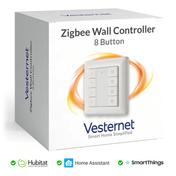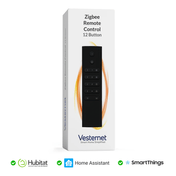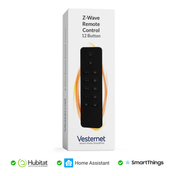
IMPORTANT - Read this first!
Note: To simplify these diagrams, we have not shown the earth cables - but all circuits MUST have the earth cable correctly installed.
We've shown wires in red to indicate that they are new wires, but it doesn't really matter what colour you use.
To protect the module a suitable rated overcurrent protection fuse must be installed on the Live input.
We work hard to keep these wiring guides accurate and up to date and would appreciate any feedback, corrections or suggestions that you may have. Please contact us using our help page or by simply emailing feedback@vesternet.com
Does your circuit look like this?
On the following section we’ll show some of the most common lighting systems in order to help you identify which one you have and how some modules can be installed in each scenario.
The following figures are based on standard UK style lighting systems both with and without Neutral at the switch. More information about 2-wire lighting systems is available in APNT-23: Understanding 2-wire and 3-wire Lighting Systems.
For information on how to physically install a Z-Wave module take a look at our guide here. To know more about how Z-Wave modules work with different switch types make sure to read our guide here.
Underneath each figure we’ll be linking to detailed guides showing all the options how a Dimmer or Relay can be added into that particular system.
Standard Lighting Circuit

Figure 1
A 2-core cable (brown and blue) carries the Live and Switched Live to the wall switch and up to the light fitting.
This type of lighting system uses "Toggle" (latching) switches. These latch in position - for instance when you press the switch to On, the switch physically stays in the On position. These are the standard light switches you'll find already fitted in your home.
If your circuit looks like this, here's how to do it with:
Standard Lighting Circuit (with Neutral)

Figure 2
If you have a 3-wire system, where Neutral is available at the switch, then a 3-wire module such as a Dimmer or Relay can be installed into the switch back box.
This type of lighting system uses "Toggle" (latching) switches. These latch in position - for instance when you press the switch to On, the switch physically stays in the On position. These are the standard light switches you'll find already fitted in your home.
If your circuit looks like this, here's how to do it with:
Standard 2-Way Lighting Circuit

Figure 3
A 2-core cable (brown and blue) carries the Live and Switched Live to the wall switch and up to the light fitting. An extra 3-core cable (brown, black and grey) connects the two wall switches together; enabling each of them to independently turn the light On or Off.
This type of lighting system uses "Toggle" (latching) switches. These latch in position - for instance when you press the switch to On, the switch physically stays in the On position. These are the standard light switches you'll find already fitted in your home.
If your circuit looks like this, here's how to do it with:
Standard 2-Way Lighting Circuit (with Neutral)

Figure 4
If you have a 3-wire system, where Neutral is available at the switch, then a 3-wire module such as a Dimmer or Relay can be installed into the switch back box.
A 2-Core cable (brown and blue) carries the Live and Neutral to the wall switch. A second 2-Core cable (brown and blue) carries Switched Live and Neutral up to the light fitting. An extra 3-Core cable (brown, black and grey) connects the two wall switches together; enabling each of them to independently turn the light On or Off.
This type of lighting system uses "Toggle" (latching) switches. These latch in position - for instance when you press the switch to On, the switch physically stays in the On position. These are the standard light switches you'll find already fitted in your home.
If your circuit looks like this, here's how to do it with:
Standard 2-Way Lighting Circuit 2-Gang

Figure 5
This is similar to the Standard 2-way Lighting Circuit but with 2 circuits being controlled by a 2-Gang switch. 2-core cables (brown and blue) carries the Live and Switched Live to the wall switch and up to each light fitting. An extra 3-core cable (brown, black and grey) connects each wall switch to one of the gangs on the 2-gang wall switch enabling each of them to independently turn the light On or Off - Switch A and Switch B Gang-1 controls one Load, Switch C and Switch B Gang-2 controls the other Load.
This type of lighting system uses "Toggle" (latching) switches. These latch in position - for instance when you press the switch to On, the switch physically stays in the On position. These are the standard light switches you'll find already fitted in your home.
Standard 2-Way Lighting Circuit 2-Gang (with Neutral)

Figure 6
This is similar to the Standard 2-way Lighting Circuit 2-Gang but with Neutral available. 2-core cables (brown and blue) carries the Live and Neutral to the wall switch and Switched Live and Neutral up to each light fitting. An extra 3-core cable (brown, black and grey) connects each wall switch to one of the gangs on the 2-gang wall switch enabling each of them to independently turn the light On or Off - Switch A and Switch B Gang-1 controls one Load, Switch C and Switch B Gang-2 controls the other Load.
This type of lighting system uses "Toggle" (latching) switches. These latch in position - for instance when you press the switch to On, the switch physically stays in the On position. These are the standard light switches you'll find already fitted in your home.
Standard 3-Way Lighting Circuit with Intermediate Switch

Figure 7
This system uses two 2-way switches (as you find in a 2-way circuit), but it also includes an Intermediate Switch that is in the "middle" of the circuit.
This type of lighting system uses "Toggle" (latching) switches. These latch in position - for instance when you press the switch to On, the switch physically stays in the On position. These are the standard light switches you'll find already fitted in your home.
If your circuit looks like this, here's how to do it with:
Standard 3-Way Lighting Circuit with Intermediate Switch (with Neutral)

Figure 8
This is similar to the Standard 2-way Lighting Circuit 2-Gang but with Neutral available. This system uses two 2-way switches (as you find in a 2-way circuit), but it also includes an Intermediate Switch that is in the "middle" of the circuit.
This type of lighting system uses "Toggle" (latching) switches. These latch in position - for instance when you press the switch to On, the switch physically stays in the On position. These are the standard light switches you'll find already fitted in your home.
If your circuit looks like this, here's how to do it with:
Alternate 2-Way Lighting Circuit

Figure 9
This is a different style of creating a 2-way lighting circuit used in some countries but uncommon in most UK buildings. It uses a 2-core (+ earth) cable between the two switches, instead of the more typical 3-core (+ earth) cable.
This type of lighting system uses "Toggle" (latching) switches. These latch in position - for instance when you press the switch to On, the switch physically stays in the On position. These are the standard light switches you'll find already fitted in your home.
If your circuit looks like this, here's how to do it with:
Alternate 2-Way Lighting Circuit (with Neutral)

Figure 10
As mentioned above this is a different style of creating a 2-way lighting circuit used in some countries but uncommon in most UK buildings. It uses a 2-core (+ earth) cable between the two switches, instead of the more typical 3-core (+ earth) cable with Neutral available.
This type of lighting system uses "Toggle" (latching) switches. These latch in position - for instance when you press the switch to On, the switch physically stays in the On position. These are the standard light switches you'll find already fitted in your home.
If your circuit looks like this, here's how to do it with:
Alternate 3-Way Lighting Circuit with Intermediate Switch

Figure 11
This is a relatively new style of creating a 2-way lighting circuit, still uncommon in most UK buildings. It uses two 2-way switches (as you find in a 2-way circuit), but it also includes an Intermediate Switch that is in the "middle" of the circuit. No Switch Location has access to both Live and Switched Live.
This type of lighting system uses "Toggle" (latching) switches. These latch in position - for instance when you press the switch to On, the switch physically stays in the On position. These are the standard light switches you'll find already fitted in your home.
If your circuit looks like this, here's how to do it with:
Alternate 3-Way Lighting Circuit with Intermediate Switch (with Neutral)

Figure 12
As mentioned above this is relatively new style of creating a 2-way lighting circuit, still uncommon in most UK buildings, and this time with Neutral available. It uses two 2-way switches (as you find in a 2-way circuit), but it also includes an Intermediate Switch that is in the "middle" of the circuit. No Switch Location has access to both Live and Switched Live.
This type of lighting system uses "Toggle" (latching) switches. These latch in position - for instance when you press the switch to On, the switch physically stays in the On position. These are the standard light switches you'll find already fitted in your home.
Star 2-Way Lighting Circuit

Figure 13
This is a ceiling installation circuit type that uses a "star" formation where all switch wires are taken to a junction box in the ceiling and then feed the light. It looks more complicated than the standard circuit but is still straightforward to wire.
This type of lighting system uses "Toggle" (latching) switches. These latch in position - for instance when you press the switch to On, the switch physically stays in the On position. These are the standard light switches you'll find already fitted in your home.

















